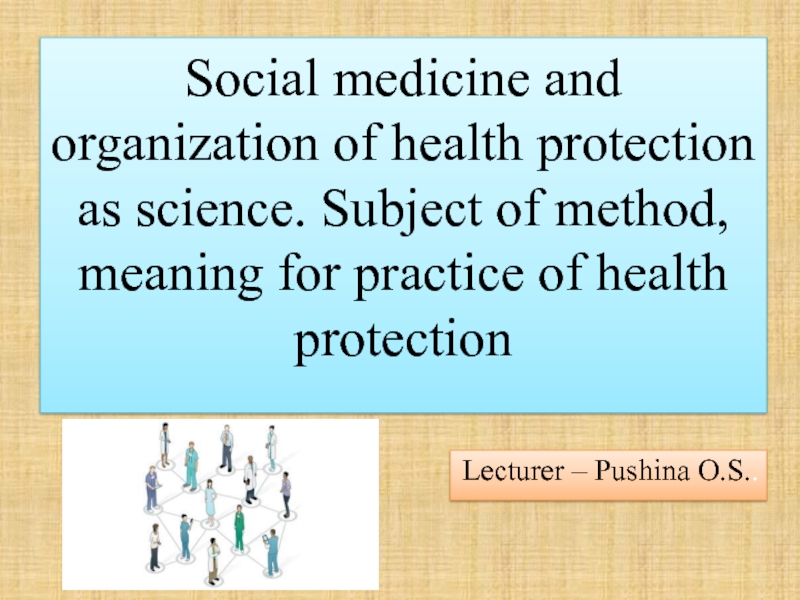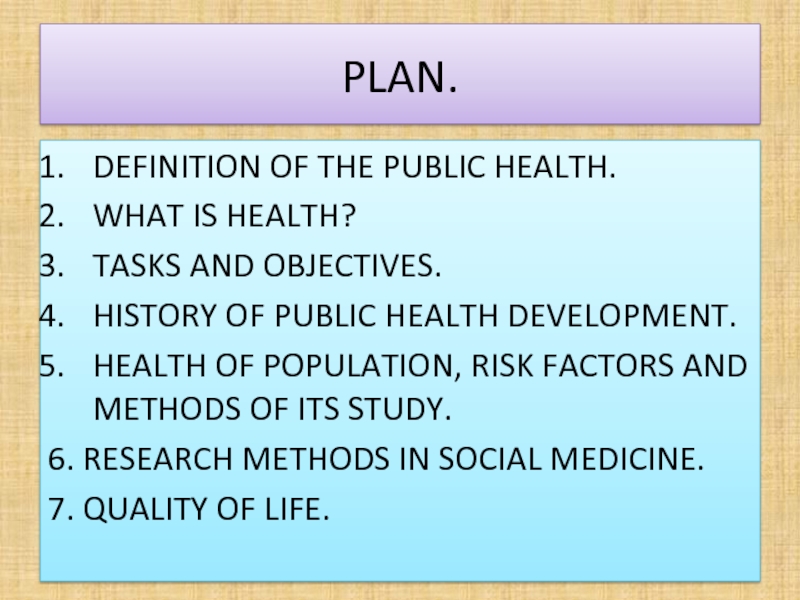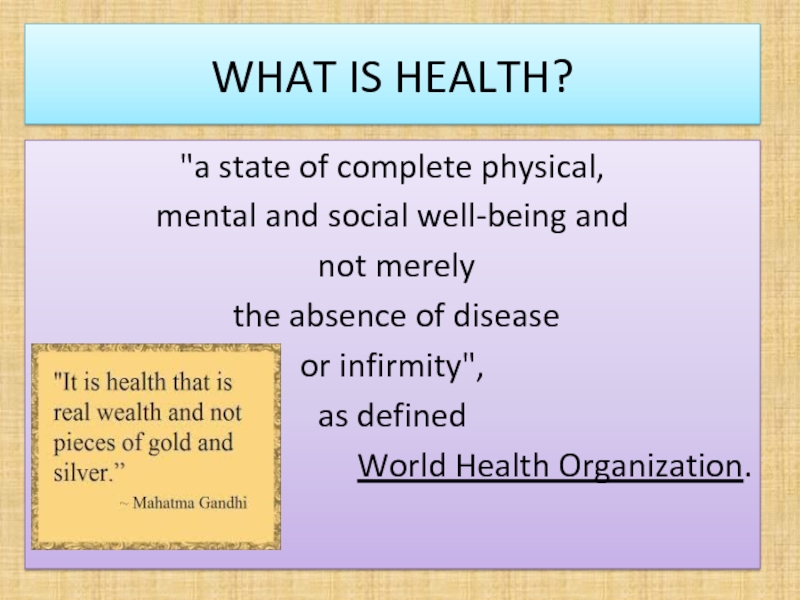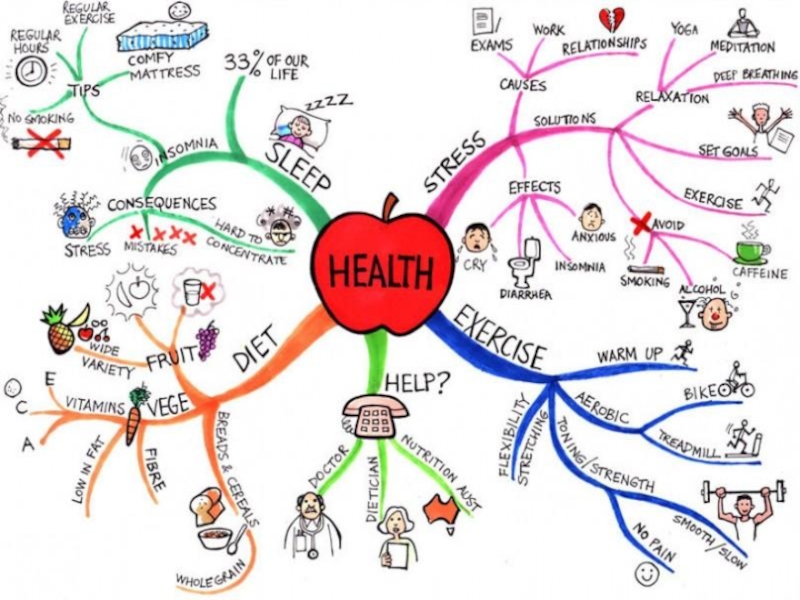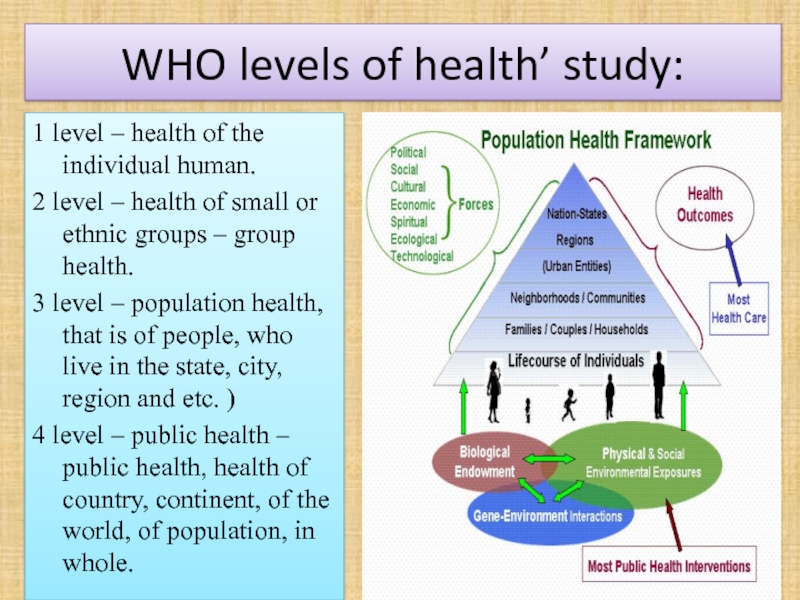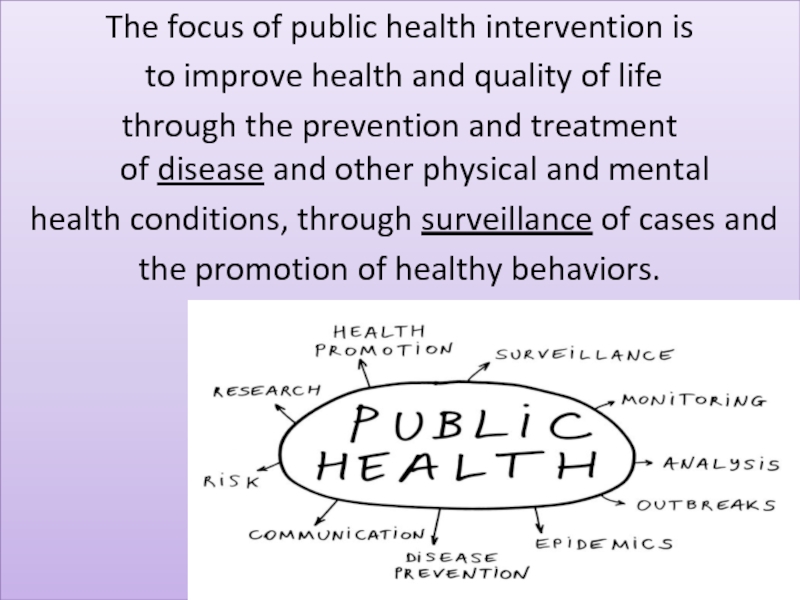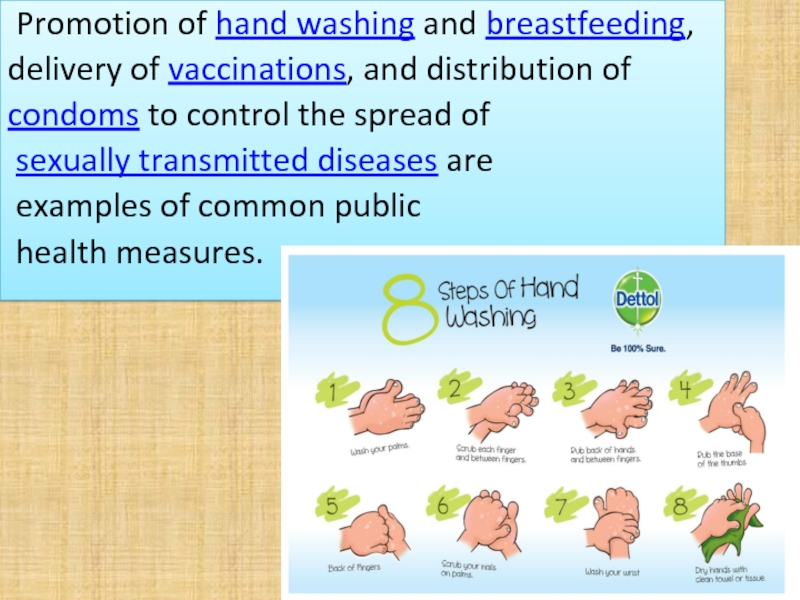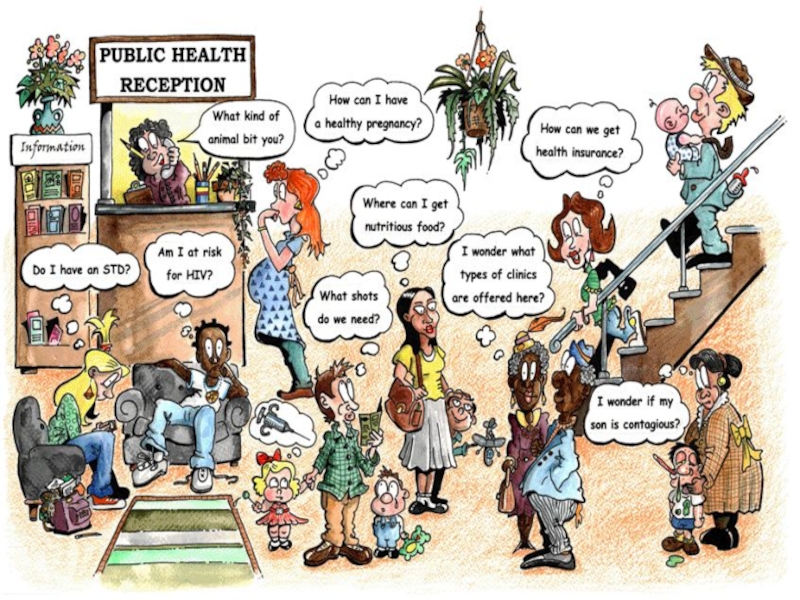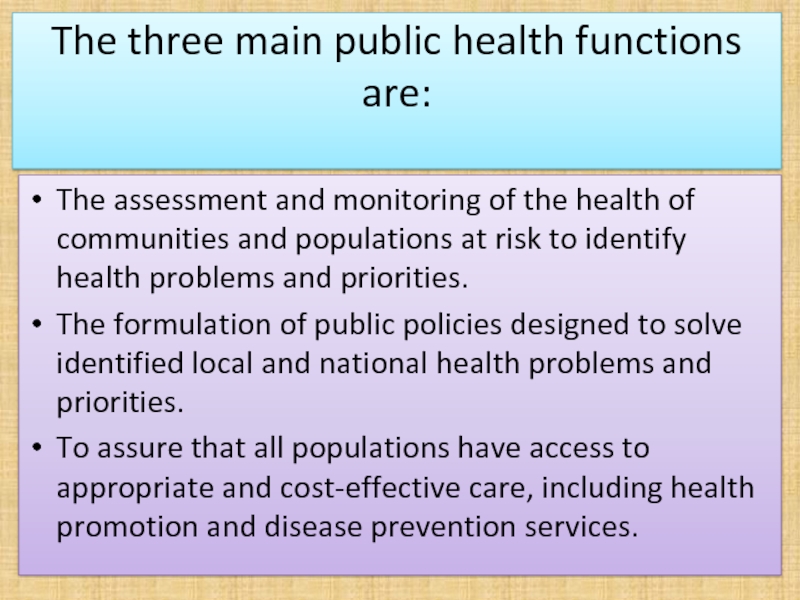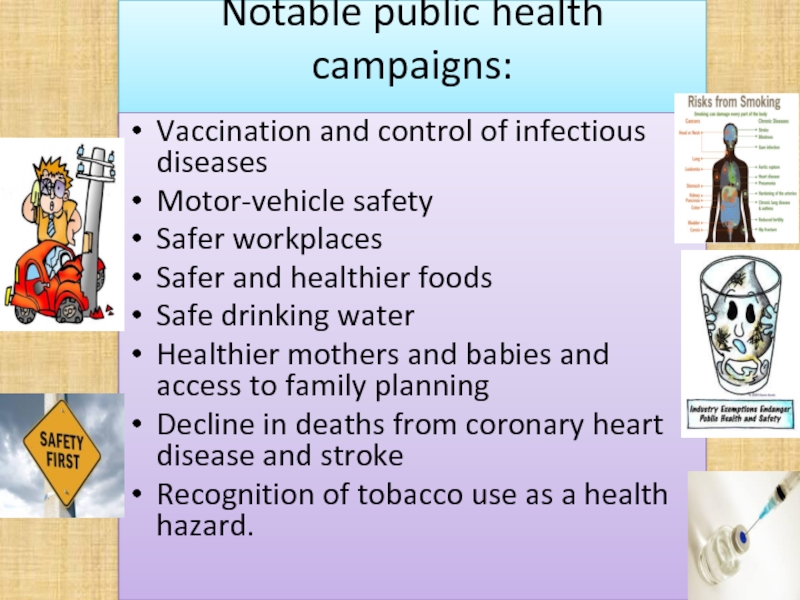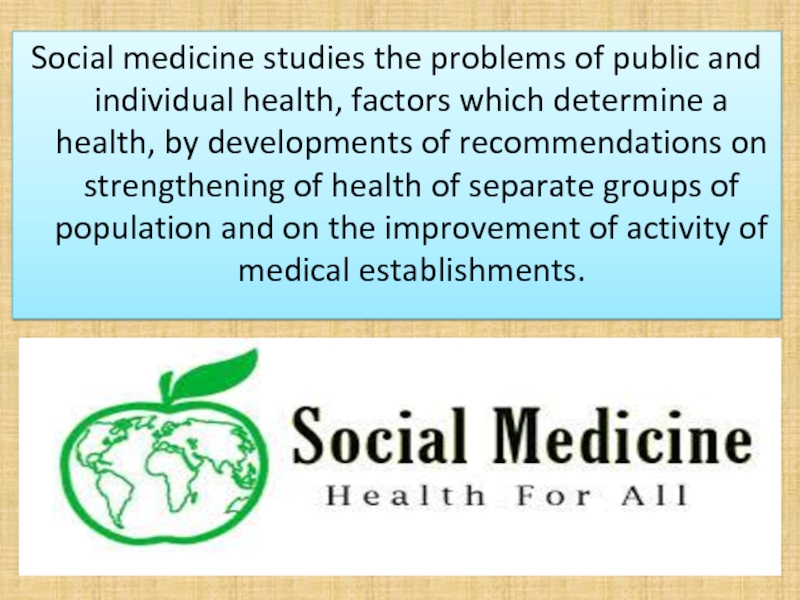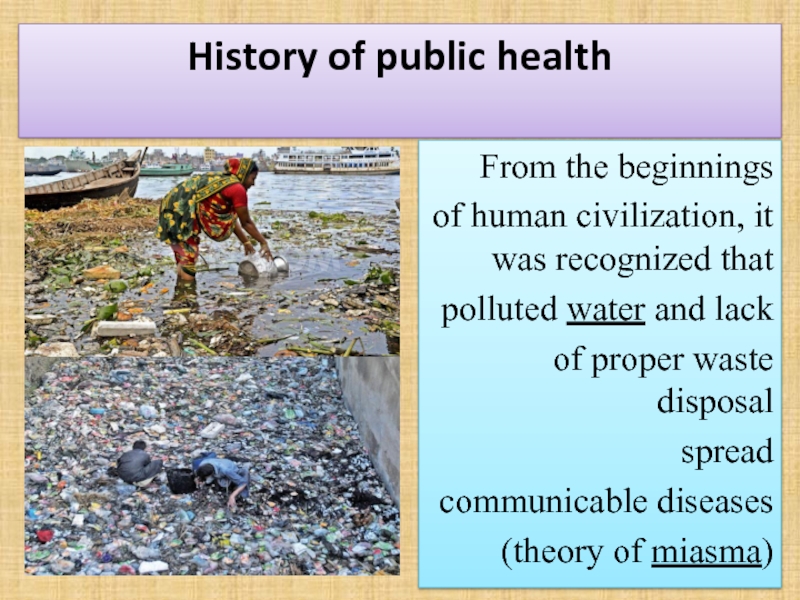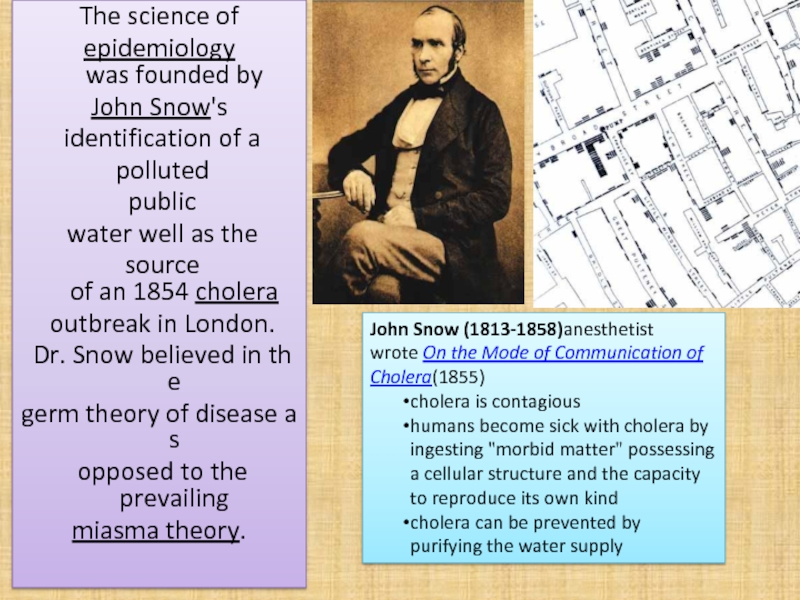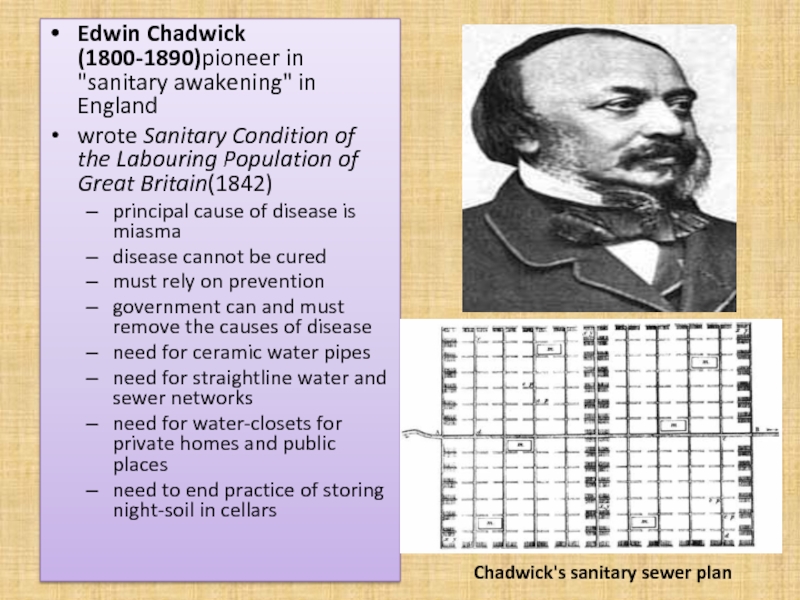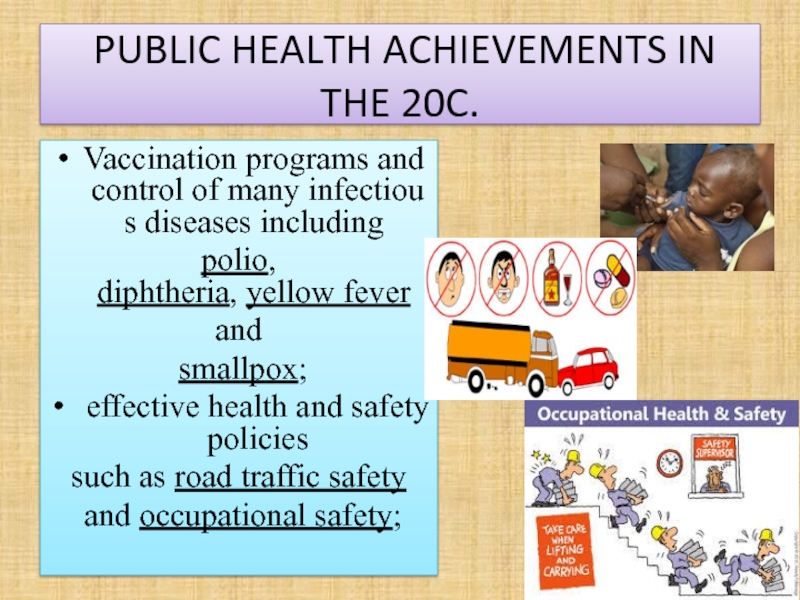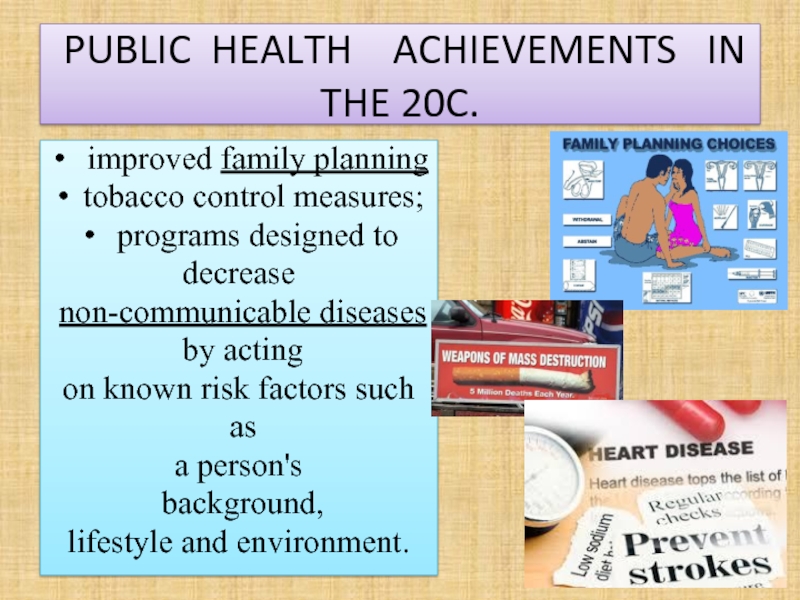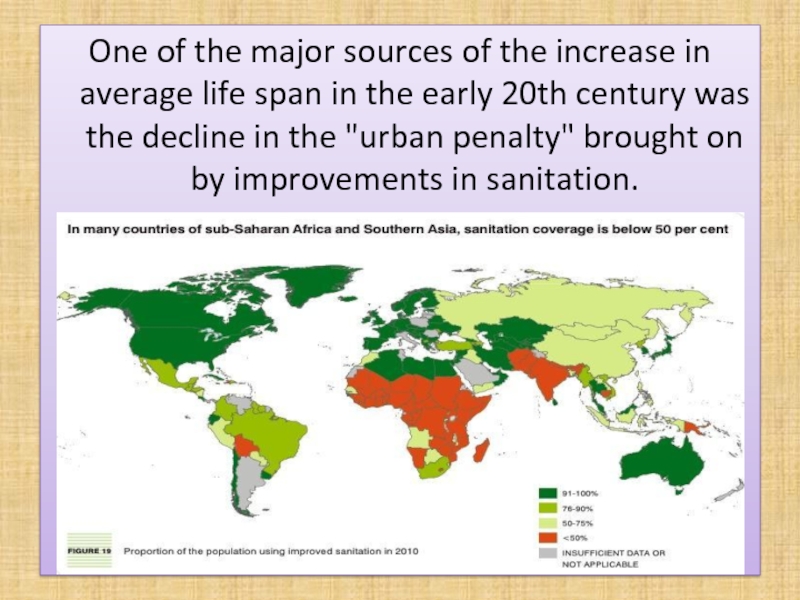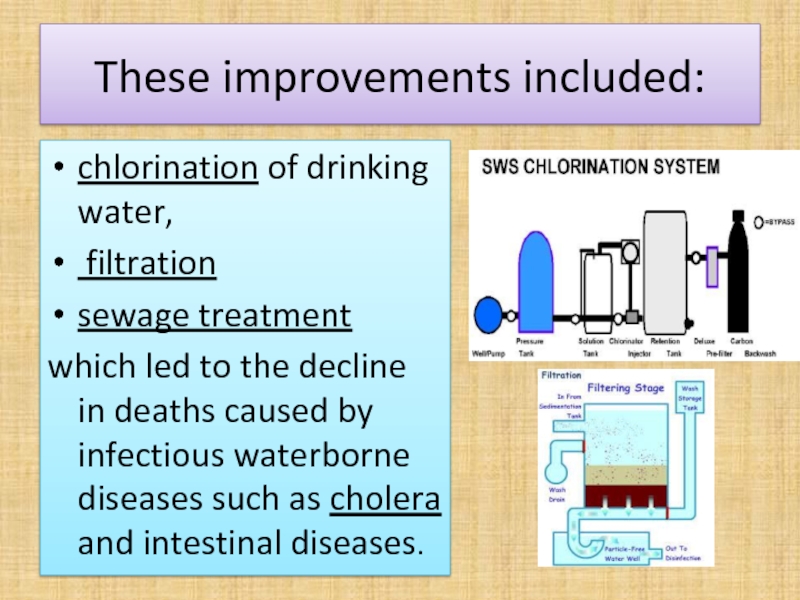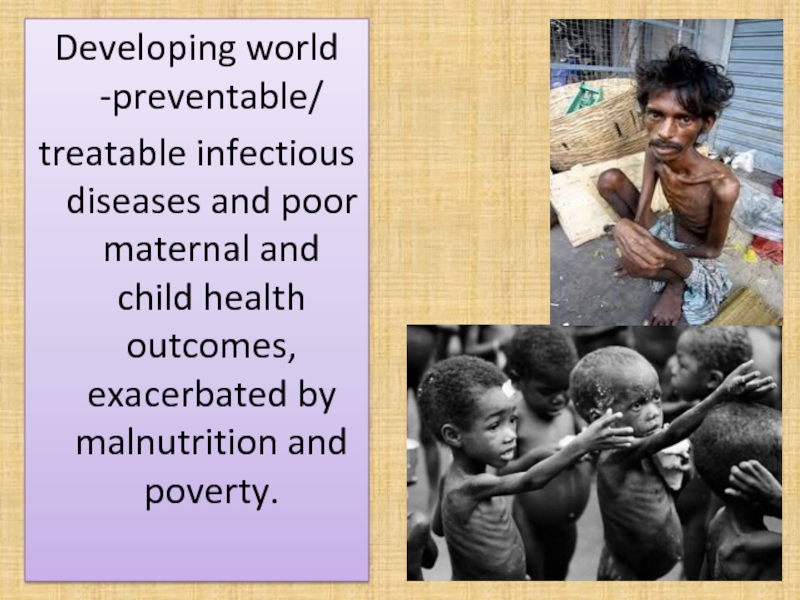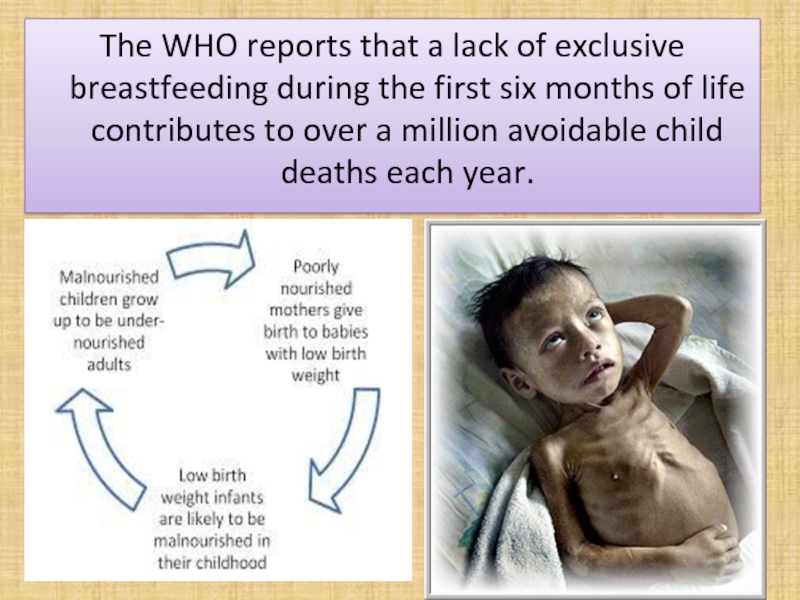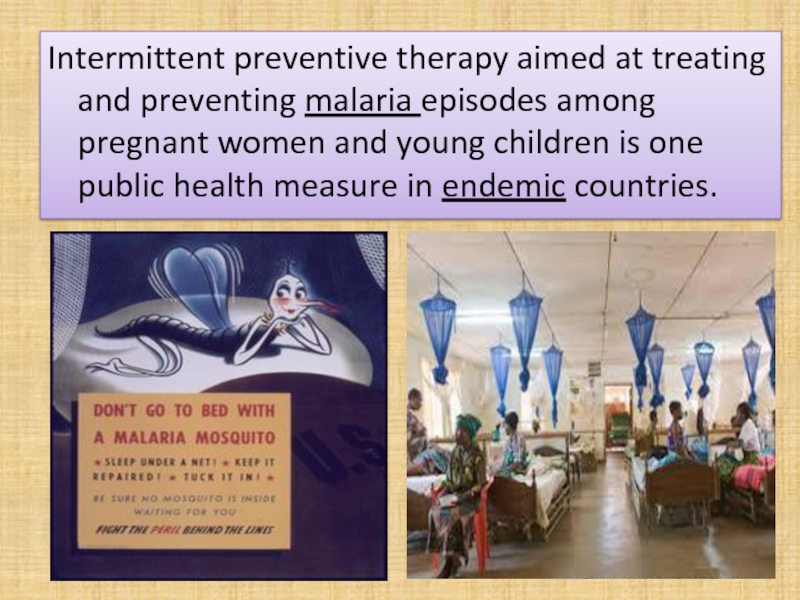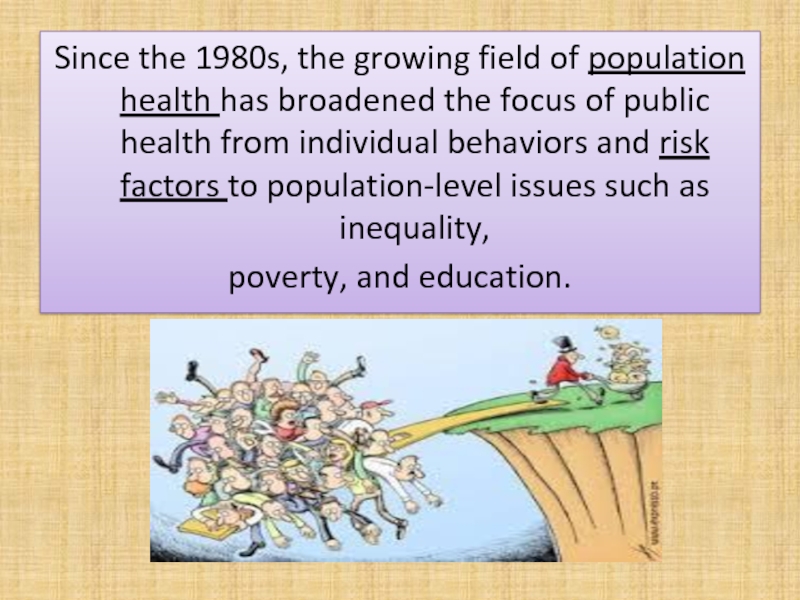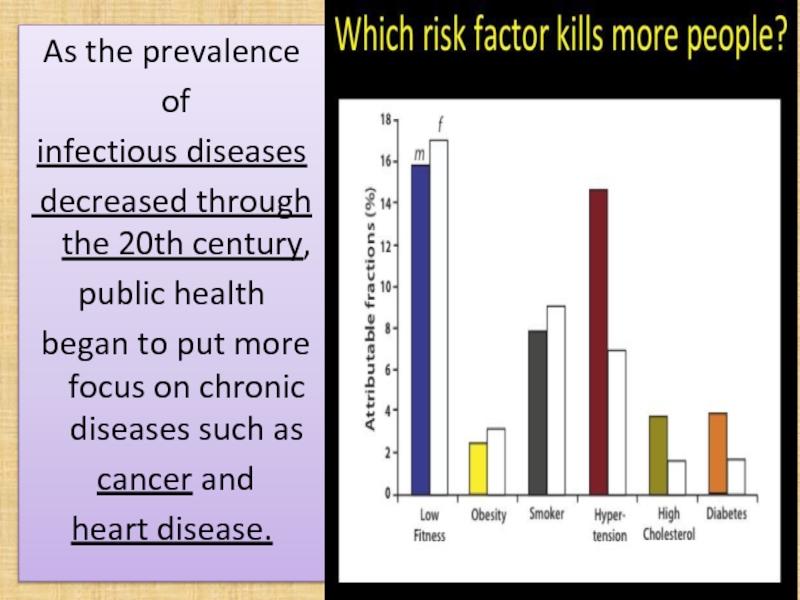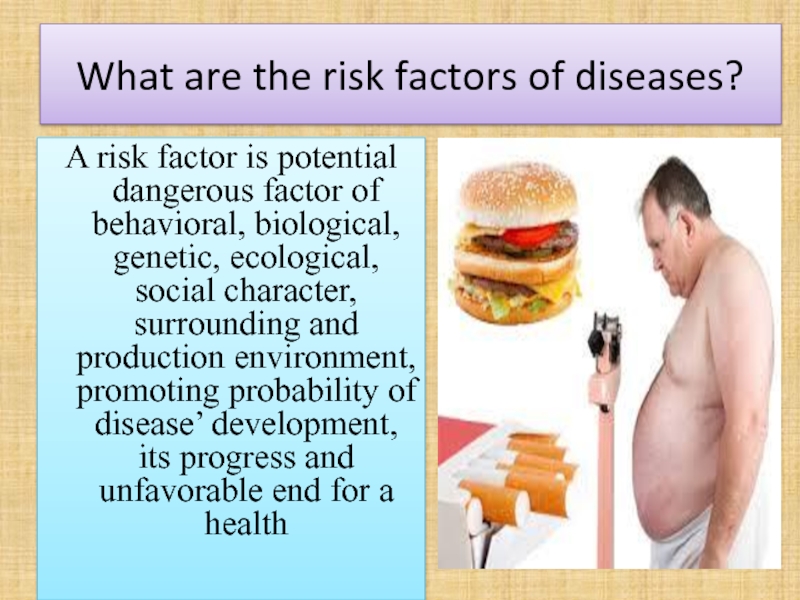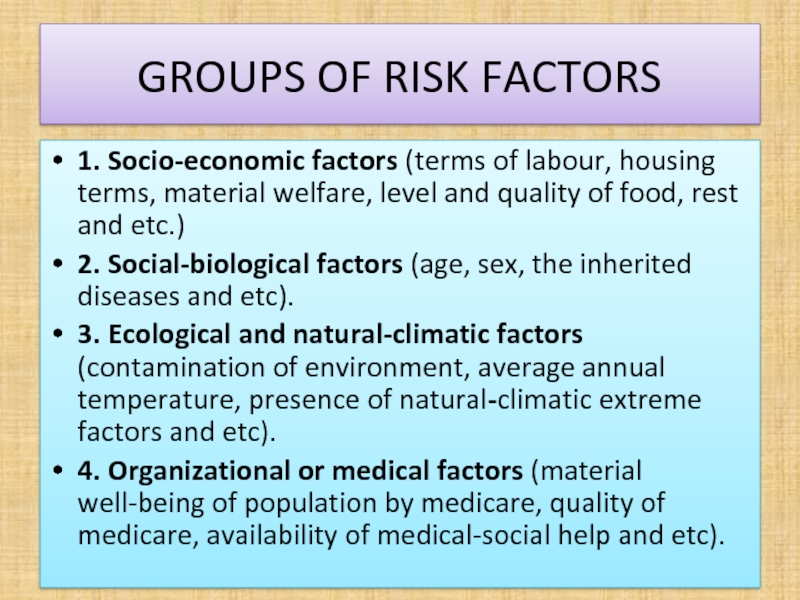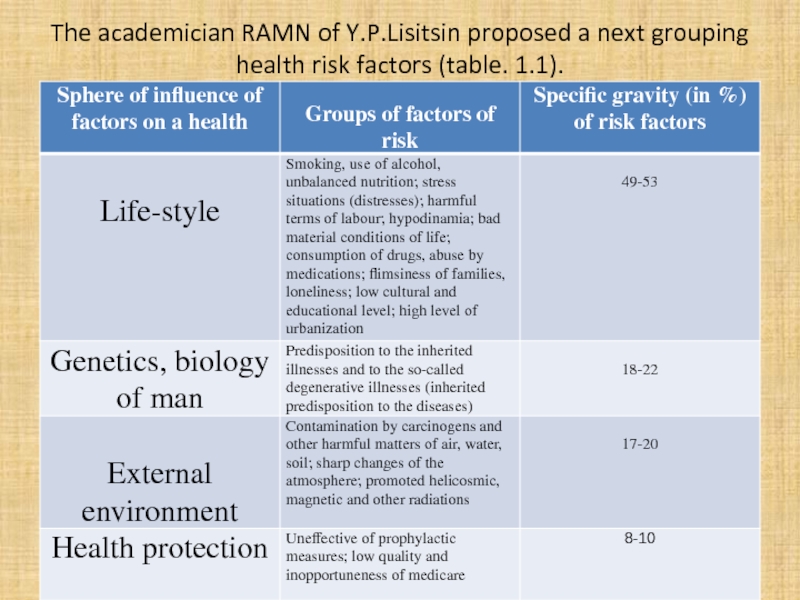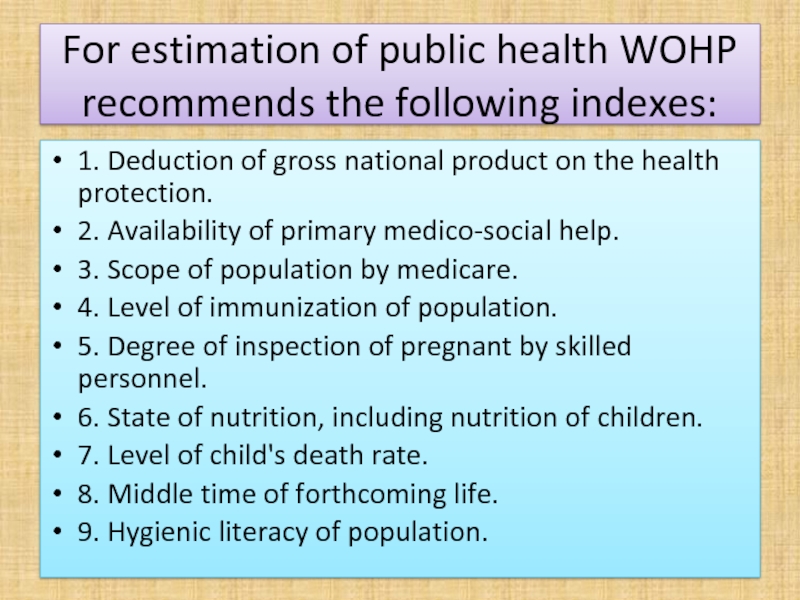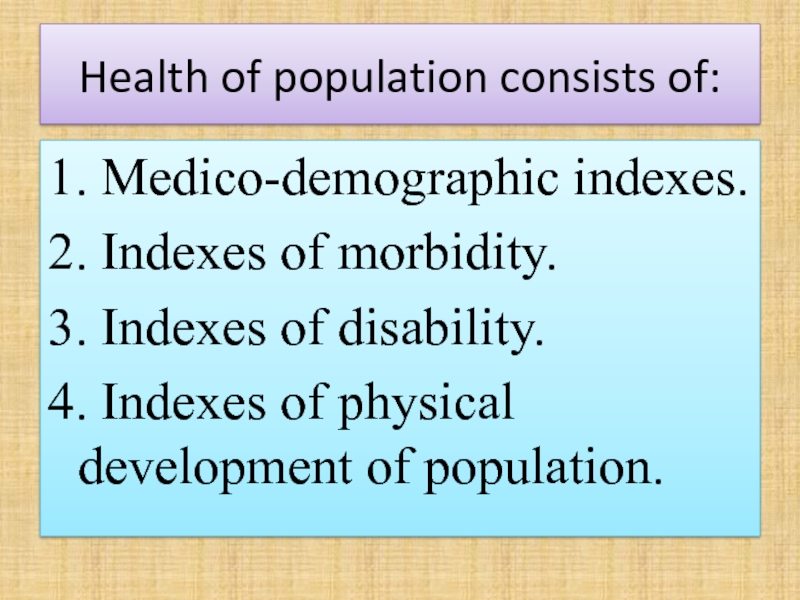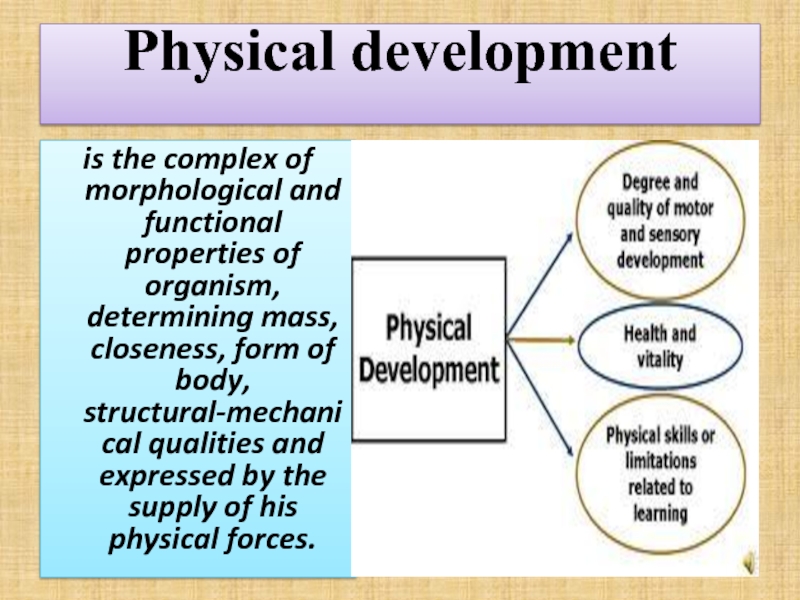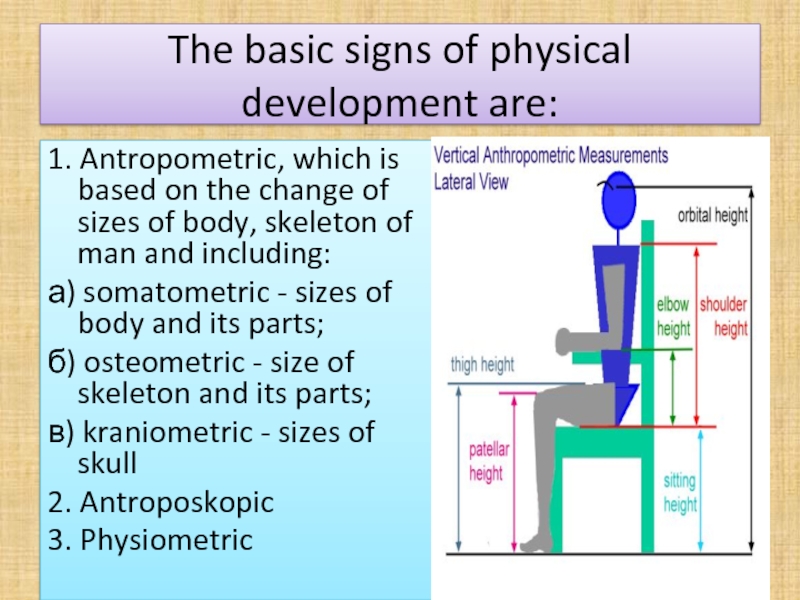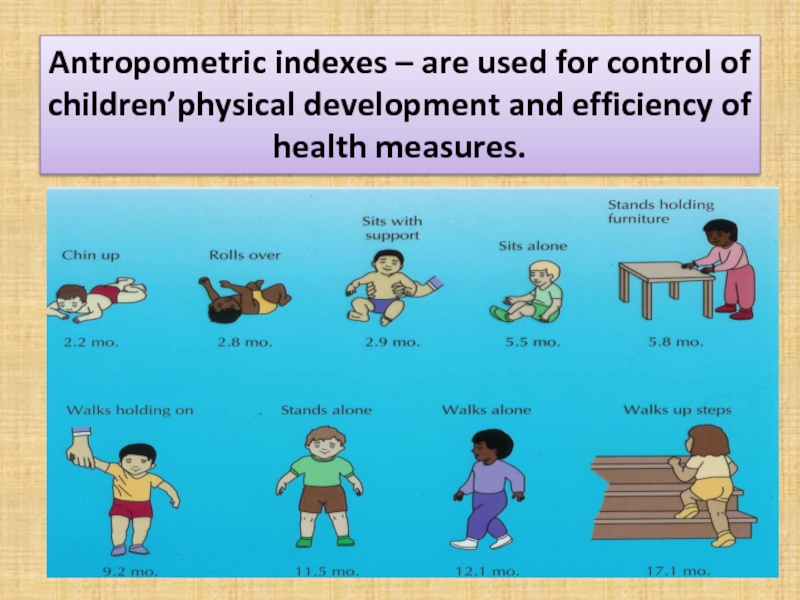Lecturer – Pushina O.S..
- Главная
- Разное
- Дизайн
- Бизнес и предпринимательство
- Аналитика
- Образование
- Развлечения
- Красота и здоровье
- Финансы
- Государство
- Путешествия
- Спорт
- Недвижимость
- Армия
- Графика
- Культурология
- Еда и кулинария
- Лингвистика
- Английский язык
- Астрономия
- Алгебра
- Биология
- География
- Детские презентации
- Информатика
- История
- Литература
- Маркетинг
- Математика
- Медицина
- Менеджмент
- Музыка
- МХК
- Немецкий язык
- ОБЖ
- Обществознание
- Окружающий мир
- Педагогика
- Русский язык
- Технология
- Физика
- Философия
- Химия
- Шаблоны, картинки для презентаций
- Экология
- Экономика
- Юриспруденция
Social medicine and organization of health protection as science. Subject of method, meaning for practice of health protection презентация
Содержание
- 1. Social medicine and organization of health protection as science. Subject of method, meaning for practice of health protection
- 2. PLAN. DEFINITION OF THE PUBLIC HEALTH. WHAT
- 3. Public health is "the science and art of disease preventing , prolonging life and promoting health through the organized efforts and informed choices of society, organizations, public and private, communities and individuals" (1920, C.E.A. Winslow).
- 4. WHAT IS HEALTH? "a state of complete physical, mental and social well-being and not merely the absence of disease or infirmity", as defined World Health Organization.
- 6. WHO levels of health’ study: 1 level
- 7. The focus of public health intervention is to improve health and quality of life through the prevention and treatment of disease and other physical and mental health conditions, through surveillance of cases and the promotion of healthy behaviors.
- 8. Promotion of hand washing and breastfeeding, delivery of vaccinations, and distribution of condoms to control the spread of sexually transmitted diseases are examples of common public health measures.
- 10. The three main public health functions are:
- 11. Notable public health campaigns: Vaccination and
- 12. Social medicine studies the problems of public
- 13. History of public health From the beginnings of human civilization, itwas recognized that polluted water and lack of proper waste disposal spread communicable diseases (theory of miasma)
- 14. Early religions attempted to regulate behavior. That specifically related to health, from types of food eaten, to regulating certain indulgent behaviors, such as drinking alcohol or sexual relations.
- 15. By Roman times, it was well understood that proper diversion of human waste was a necessary tenet of public health in urban areas.
- 16. The Chinese developed the practice of variolation following a smallpox epidemic around 1000BC. The practice of vaccination did not become prevalent until the 1820s, following the work of Edward Jenner to treat smallpox.
- 17. Black Death in Europe Removing bodies of the dead did little to stem the plague, which was most likely spread by rodent-borne fleas. Burning parts of cities resulted in much greater benefit, since it destroyed the rodent infestations.
- 18. At Venice in 1348, public officials created
- 19. A Cholera pandemic devastated Europe between 1829- 1851, and was first fought by the use of what Foucault called "SOCIAL MEDICINE", which focused on flux, circulation of air, location of cemeteries, etc. Dehydrated Cholera victim
- 20. The science of epidemiology was founded by John Snow's identification of a polluted public
- 21. Edwin Chadwick (1800-1890)pioneer in "sanitary awakening" in
- 22. PUBLIC HEALTH ACHIEVEMENTS IN THE 20C. Vaccination programs and control of many infectious diseases including polio, diphtheria, yellow fever and smallpox; effective health and safety policies such as road traffic safety and occupational safety;
- 23. PUBLIC HEALTH ACHIEVEMENTS IN THE
- 24. One of the major sources of the
- 25. These improvements included: chlorination of drinking water,
- 26. Developing world -preventable/ treatable infectious diseases and
- 27. The WHO reports that a lack of
- 28. Intermittent preventive therapy aimed at treating and
- 29. Since the 1980s, the growing field of
- 30. As the prevalence of infectious diseases decreased through the 20th century, public health began to put more focus on chronic diseases such as cancer and heart disease.
- 31. What are the risk factors of diseases?
- 32. GROUPS OF RISK FACTORS 1. Socio-economic factors
- 33. The academician RAMN of Y.P.Lisitsin proposed a next grouping health risk factors (table. 1.1).
- 34. LIFESTYLE A way of living
- 35. For estimation of public health WOHP recommends
- 36. Health of population consists of: 1. Medico-demographic
- 37. Physical development is the complex of
- 38. The basic signs of physical development are:
- 39. Antropometric indexes – are used for control
- 40. Quality of life. Individuals’ perception of their
- 41. Quality of life. It is a broad
Слайд 1Social medicine and organization of health protection as science. Subject of
method, meaning for practice of health protection
Слайд 2PLAN.
DEFINITION OF THE PUBLIC HEALTH.
WHAT IS HEALTH?
TASKS AND OBJECTIVES.
HISTORY OF PUBLIC
HEALTH DEVELOPMENT.
HEALTH OF POPULATION, RISK FACTORS AND METHODS OF ITS STUDY.
6. RESEARCH METHODS IN SOCIAL MEDICINE.
7. QUALITY OF LIFE.
HEALTH OF POPULATION, RISK FACTORS AND METHODS OF ITS STUDY.
6. RESEARCH METHODS IN SOCIAL MEDICINE.
7. QUALITY OF LIFE.
Слайд 3Public health is "the science and art of disease preventing , prolonging life and promoting health
through the organized efforts and informed
choices of society, organizations,
public and private, communities and individuals" (1920, C.E.A. Winslow).
Слайд 4WHAT IS HEALTH?
"a state of complete physical,
mental and social well-being and
not merely
the absence of disease
or infirmity",
as defined
World Health Organization.
Слайд 6WHO levels of health’ study:
1 level – health of the individual
human.
2 level – health of small or ethnic groups – group health.
3 level – population health, that is of people, who live in the state, city, region and etc. )
4 level – public health – public health, health of country, continent, of the world, of population, in whole.
2 level – health of small or ethnic groups – group health.
3 level – population health, that is of people, who live in the state, city, region and etc. )
4 level – public health – public health, health of country, continent, of the world, of population, in whole.
Слайд 7The focus of public health intervention is
to improve health and quality of life
through the prevention and treatment of disease and other physical and mental
health conditions, through surveillance of cases and
the promotion of healthy behaviors.
Слайд 8 Promotion of hand washing and breastfeeding,
delivery of vaccinations, and distribution of
condoms to control the spread of
sexually transmitted diseases are
examples of common public
health measures.
Слайд 10The three main public health functions are:
The assessment and monitoring of
the health of communities and populations at risk to identify health problems and priorities.
The formulation of public policies designed to solve identified local and national health problems and priorities.
To assure that all populations have access to appropriate and cost-effective care, including health promotion and disease prevention services.
The formulation of public policies designed to solve identified local and national health problems and priorities.
To assure that all populations have access to appropriate and cost-effective care, including health promotion and disease prevention services.
Слайд 11Notable public health campaigns:
Vaccination and control of infectious diseases
Motor-vehicle safety
Safer workplaces
Safer
and healthier foods
Safe drinking water
Healthier mothers and babies and access to family planning
Decline in deaths from coronary heart disease and stroke
Recognition of tobacco use as a health hazard.
Safe drinking water
Healthier mothers and babies and access to family planning
Decline in deaths from coronary heart disease and stroke
Recognition of tobacco use as a health hazard.
Слайд 12Social medicine studies the problems of public and individual health, factors
which determine a health, by developments of recommendations on strengthening of health of separate groups of population and on the improvement of activity of medical establishments.
Слайд 13History of public health
From the beginnings
of human civilization, itwas recognized that
polluted water and lack
of proper waste disposal
spread
communicable diseases
(theory of miasma)
Слайд 14 Early religions
attempted
to
regulate behavior.
That specifically related to
health, from types of
food eaten, to regulating
certain indulgent
behaviors, such as
drinking alcohol or sexual
relations.
Слайд 15By Roman times, it was well understood that proper diversion of human waste was a necessary tenet of public health in urban areas.
Слайд 16 The Chinese developed
the practice of
variolation
following a smallpox
epidemic
around 1000BC.
The practice of
vaccination
did not become
prevalent until
the 1820s,
following the work
of Edward Jenner
to treat smallpox.
Слайд 17 Black Death in Europe
Removing bodies
of the dead
did little to stem the
plague, which was most likely spread by
rodent-borne fleas.
Burning parts of cities
resulted in much
greater benefit, since it
destroyed the rodent
infestations.
Слайд 18At Venice in 1348, public officials created a system of sanitary
control to combat plague and other infectious diseases, with observation stations, isolation hospitals, and disinfection procedures- QUARANTINE
Слайд 19 A Cholera pandemic
devastated
Europe between 1829- 1851, and was first
fought by the use of what
Foucault called
"SOCIAL MEDICINE", which focused on flux, circulation of
air, location
of
cemeteries, etc.
Dehydrated Cholera victim
Слайд 20The science of
epidemiology was founded by
John Snow's
identification of a
polluted
public
water well as the
source of an 1854 cholera
outbreak in London.
Dr. Snow believed in the
germ theory of disease as
opposed to the prevailing
miasma theory.
John Snow (1813-1858)anesthetist
wrote On the Mode of Communication of
Cholera(1855)
cholera is contagious
humans become sick with cholera by ingesting "morbid matter" possessing a cellular structure and the capacity to reproduce its own kind
cholera can be prevented by purifying the water supply
cholera is contagious
humans become sick with cholera by ingesting "morbid matter" possessing a cellular structure and the capacity to reproduce its own kind
cholera can be prevented by purifying the water supply
Слайд 21Edwin Chadwick (1800-1890)pioneer in "sanitary awakening" in England
wrote Sanitary Condition of the
Labouring Population of Great Britain(1842)
principal cause of disease is miasma
disease cannot be cured
must rely on prevention
government can and must remove the causes of disease
need for ceramic water pipes
need for straightline water and sewer networks
need for water-closets for private homes and public places
need to end practice of storing night-soil in cellars
principal cause of disease is miasma
disease cannot be cured
must rely on prevention
government can and must remove the causes of disease
need for ceramic water pipes
need for straightline water and sewer networks
need for water-closets for private homes and public places
need to end practice of storing night-soil in cellars
Chadwick's sanitary sewer plan
Слайд 22 PUBLIC HEALTH ACHIEVEMENTS IN THE 20C.
Vaccination programs and control of many infectious diseases including
polio, diphtheria, yellow fever
and
smallpox;
effective health and safety policies
such as road traffic safety
and occupational safety;
Слайд 23 PUBLIC HEALTH ACHIEVEMENTS IN THE 20C.
improved family planning
tobacco control measures;
programs designed to
decrease
non-communicable diseases
by acting
on known risk factors such
as
a person's
background,
lifestyle and environment.
Слайд 24One of the major sources of the increase in average life
span in the early 20th century was the decline in the "urban penalty" brought on by improvements in sanitation.
Слайд 25These improvements included:
chlorination of drinking water,
filtration
sewage treatment
which led
to the decline in deaths caused by infectious waterborne diseases such as cholera and intestinal diseases.
Слайд 26Developing world -preventable/
treatable infectious diseases and poor maternal and child health
outcomes, exacerbated by malnutrition and poverty.
Слайд 27The WHO reports that a lack of exclusive breastfeeding during the
first six months of life contributes to over a million avoidable child deaths each year.
Слайд 28Intermittent preventive therapy aimed at treating and preventing malaria episodes among
pregnant women and young children is one public health measure in endemic countries.
Слайд 29Since the 1980s, the growing field of population health has broadened
the focus of public health from individual behaviors and risk factors to population-level issues such as inequality,
poverty, and education.
poverty, and education.
Слайд 30As the prevalence
of
infectious diseases
decreased through the 20th century,
public health
began to put more focus on chronic diseases such as
cancer and
heart disease.
Слайд 31What are the risk factors of diseases?
A risk factor is potential
dangerous factor of behavioral, biological, genetic, ecological, social character, surrounding and production environment, promoting probability of disease’ development, its progress and unfavorable end for a health
Слайд 32GROUPS OF RISK FACTORS
1. Socio-economic factors (terms of labour, housing terms,
material welfare, level and quality of food, rest and etc.)
2. Social-biological factors (age, sex, the inherited diseases and etc).
3. Ecological and natural-climatic factors (contamination of environment, average annual temperature, presence of natural-climatic extreme factors and etc).
4. Organizational or medical factors (material well-being of population by medicare, quality of medicare, availability of medical-social help and etc).
2. Social-biological factors (age, sex, the inherited diseases and etc).
3. Ecological and natural-climatic factors (contamination of environment, average annual temperature, presence of natural-climatic extreme factors and etc).
4. Organizational or medical factors (material well-being of population by medicare, quality of medicare, availability of medical-social help and etc).
Слайд 33The academician RAMN of Y.P.Lisitsin proposed a next grouping health risk
factors (table. 1.1).
Слайд 34LIFESTYLE
A way of living of individuals, families (households), and societies, which they manifest in coping with
their physical, psychological, social, and economic environments on a day-to-day basis.
Слайд 35For estimation of public health WOHP recommends the following indexes:
1. Deduction
of gross national product on the health protection.
2. Availability of primary medico-social help.
3. Scope of population by medicare.
4. Level of immunization of population.
5. Degree of inspection of pregnant by skilled personnel.
6. State of nutrition, including nutrition of children.
7. Level of child's death rate.
8. Middle time of forthcoming life.
9. Hygienic literacy of population.
2. Availability of primary medico-social help.
3. Scope of population by medicare.
4. Level of immunization of population.
5. Degree of inspection of pregnant by skilled personnel.
6. State of nutrition, including nutrition of children.
7. Level of child's death rate.
8. Middle time of forthcoming life.
9. Hygienic literacy of population.
Слайд 36Health of population consists of:
1. Medico-demographic indexes.
2. Indexes of morbidity.
3. Indexes
of disability.
4. Indexes of physical development of population.
4. Indexes of physical development of population.
Слайд 37Physical development
is the complex of morphological and functional properties of organism,
determining mass, closeness, form of body, structural-mechanical qualities and expressed by the supply of his physical forces.
Слайд 38The basic signs of physical development are:
1. Antropometric, which is based
on the change of sizes of body, skeleton of man and including:
а) somatometric - sizes of body and its parts;
б) osteometric - size of skeleton and its parts;
в) kraniometric - sizes of skull
2. Antroposkopic
3. Physiometric
а) somatometric - sizes of body and its parts;
б) osteometric - size of skeleton and its parts;
в) kraniometric - sizes of skull
2. Antroposkopic
3. Physiometric
Слайд 39Antropometric indexes – are used for control of children’physical development and
efficiency of health measures.
Слайд 40Quality of life.
Individuals’ perception of their position in life
in the context
of the culture and value systems
in which they live and in relation to their
goals, expectations, standards and concerns.
in which they live and in relation to their
goals, expectations, standards and concerns.
Слайд 41Quality of life.
It is a broad ranging concept affected in a
complex
way by the person's physical health,
psychological state, level of independence,
social relationships, personal beliefs and their
relationship to salient features of their
environment.
psychological state, level of independence,
social relationships, personal beliefs and their
relationship to salient features of their
environment.
